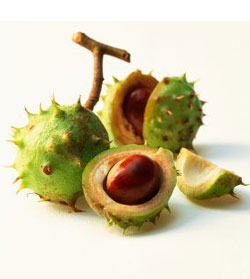
More evidence that low-calorie sweeteners are bad for your health
Studies show that artificial sweeteners can raise the risk of hypertension, metabolic syndrome, type 2 diabetes and heart disease, including stroke.

Q – I’m 40, have three children, and suffer from terrible varicose veins. They bulge out of my skin and are lumpy and twisted. A burning sensation and throbbing accompanies them, and my legs ache and are painful. It affects my life in that I can’t do any exercise or strenuous activity, and even being on my feet a lot has me in agony. Moreover, they are horribly unattractive; I’m so self-conscious and have to always cover up. What can I do?
A – Varicose veins are swollen and enlarged veins, usually blue or dark purple in colour. They may also be lumpy, bulging or twisted in appearance. They mostly occur in the legs. Swollen and distended veins in the leg can be caused by a combination of poor venous circulation, extra abdominal pressure, e.g. constipation, water retention, pregnancy, being overweight as well as a hereditary tendency. Prolonged periods of standing and lack of exercise and smoking are contributory factors.
Although they can be uncomfortable and unsightly, for most people varicose veins do not present serious health problems. They should not affect your circulation or cause any long-term health risks.
General measures to improve the problem include increased exercise, and a diet which will reduce the tendency towards constipation — ideally a wholefood diet including plenty of fresh fruit. Resting with legs raised will help, as will giving up smoking and drinking less tea and coffee. Good quality compression stockings are also useful for times when you have to be on your feet for prolonged periods.
The good news is that there are some tried and tested natural remedies that should be able to help. Try taking a supplement containing the bioflavonoid rutin. Rutin will help to build up the walls of the veins; these can be taken as a bioflavonoid supplement or by eating buckwheat, which is a main source of rutin.
The herb horse chestnut tones the venous system and is widely used by herbalists for varicose veins as well as being the basis for many conventional internal and external remedies. The simplest way to take it is to buy the tincture and take the dosage recommended on the label for at least 3 months (if you are pregnant or any other medication do check with your GP or qualified herbalist first). For instant relief you can also combine horse chestnut tincture with witch hazel to make a cooling and astringent ‘lotion’ to apply over the affected veins.
You might also try combining marigold and witch hazel infusion can be made into a compress and used daily, or dilute the tinctures so you can apply them externally onto the affected area.
Internally try a combination of dandelion, hawthorn, horse chestnut and lime blossom: these herbs aid circulation, inflammation and are diuretic. Combine and make an infusion using one teaspoon of each herb per cup, or use as tinctures diluted in water. Take three times a day for up to four weeks but if no improvement is seen, consult a practitioner.
Essential oils that will relieve varicose veins include chamomile, cypress and lemon. Add 10 drops of each to 50ml of a light vegetable base oil and massage into the legs around, rather than on, the veins, or use as a compress, or in the bath.

Please subscribe me to your newsletter mailing list. I have read the
privacy statement